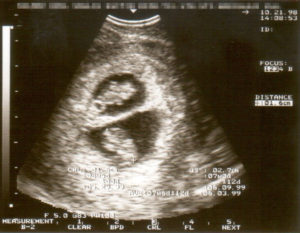Multiple Births Increase the Risk of Birth Injuries and Cerebral Palsy
Studies show that pregnancies involving more than one child (e.g., twins, triplets, etc.) correlate with an increased risk of the development of cerebral palsy.

Multiple Births & Cerebral Palsy
This isn’t to say that multiple births cause cerebral palsy per se, but rather that multiple births (multiparity) tend to present more opportunities for things to go wrong during delivery, increasing the chances that a child may suffer brain damage which then develops into cerebral palsy.
Some fertility drugs taken before pregnancy (such as Clomid), have been shown to increase a woman’s chances of conceiving twins or triplets, which means doctors must be very up-front with the patient about the risks before beginning such treatment.
Women carrying twins, triplets, or quadruplets usually have their pregnancy marked as “high risk” due to the inherent risks involved with a multiple gestation pregnancy. In many instances, doctors may recommend a c-section delivery to help reduce the risk of injury. Failure to order a cesarean section delivery in a situation where any other medical professional should have known to is a prime example of medical malpractice.
Doctors in charge ought to be competent, as well as take the necessary steps to ensure that they are not putting the mother-to-be and her children at risk. Women expecting twins or triplets should to be provided with special attention (during gestation and labor), as multiple births can present serious risks and complications.
Here are some of the complications associated with multiple births, which could increase the risk of cerebral palsy:
- Preeclampsia – this is a condition that is characterized by maternal high blood pressure as well as elevated protein in urine, which can lead to shock, fetal distress, and the interruption of oxygen (blood flow) to the fetuses in the womb.
- Postpartum hemorrhage – A postpartum hemorrhage is defined as excessive blood loss following delivery. The most-common causes are uterine atony or placental abruption.
- Placenta previa – This is caused by the placenta fully covering or blocking the head of the cervix, making labor impossible and often necessitating a c-section.
- Pre-term labor – Women carrying more than one child may be more prone to giving birth before the expected due date as a result of the strain placed on the cervix.
- Umbilical cord prolapse – This refers to the compression of the umbilical cord, often due to descending before the baby has a chance to pass through the cervix and enter the birth canal. This can lead to hypoxia in the child, since this cord is what transports oxygenated blood to the fetus.
- Brachial plexus injuries – Multiple vaginal deliveries can lead to an injury involving the network of nerves found around a child’s neck, arms, hands and shoulders (the brachial plexus), often leading to nerve damage or Erb’s palsy.
- Increased risk of seizures – The effort involved in giving birth to multiple children may throw the mother into seizures, which can cut off the children’s oxygen and blood supply to their hearts and brains, resulting in the development of cerebral palsy.
- Breech birth – Multiple births often involve one of the children being delivered in an awkward position, which could lead to asphyxiation. If these events are not identified and mitigated by medical professionals in a timely manner, the child could develop cerebral palsy as a result of hypoxia.
Was it Medical Malpractice?
It’s important to understand that not every birth injury is the result of medical malpractice. Malpractice is defined as an act or omission by a health care provider in which the treatment provided falls below the accepted standard of practice in the medical community, and causes injury or death to the patient.
At the same time, medical professionals know that multiple births present several potential risks to both the mother and child, and they should always do everything necessary (within reason) to mitigate such risks. Failing to take a patient’s comprehensive medical history into consideration could be considered medical malpractice, as can failing to monitor/detect fetal distress signals or failing to timely perform a necessary cesarean section delivery.
Understaffing or poor training could also open the hospital up to legal liability, as could failing to perform necessary medical tests (or failing to properly analyze and interpret said test results).
If you feel that your child’s birth injury was the result of medical malpractice and would like to discuss the legal options available to you and your family, call us at 1-855-833-3707 for a free consultation.
